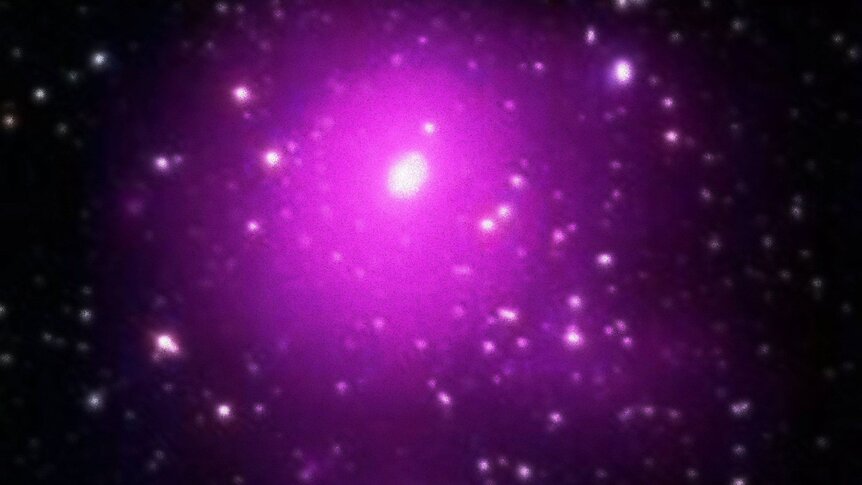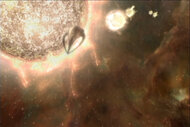Create a free profile to get unlimited access to exclusive videos, sweepstakes, and more!
Wrap your mind around this newly-discovered ultramassive black hole

Move over supermassive black holes, here comes an ultramassive black hole to engulf your domain!
Open your eyes and peer into the the cold cosmic abyss of this newly discovered supermassive black hole existing in the middle of Holmberg 15A, a supergiant elliptical galaxy nearly 700 million light-years away, which itself resides dead center in the Abell 85 galaxy cluster.
This imposing heavenly object is one of the biggest black holes ever found by scientists, and the largest discovered by tracking the precise movement of the neighboring stars around it. Initial measurements resulting from the dynamics of the brilliant galaxy and the cluster had astronomers estimating Holm 15A's impressive mass to be up to 310 billion times the mass of the Sun. Those calculations were indirect measurements of the enormous black hole, and a recent study using more precise direct measurements was recently published in Cornell University's online academic site, The Astrophysical Journal.
"We use orbit-based, axisymmetric Schwarzschild models to analyse the stellar kinematics of Holm 15A from new high-resolution, wide-field spectral observations obtained with MUSE at the VLT. We find a supermassive black hole (SMBH) with a mass of (4.0 ± 0.80) × 1010 solar masses at the center of Holm 15A," the research team explained in the new paper. "This is the most massive black hole with a direct dynamical detection in the local Universe."
Conservatively encompassing 40 billion solar masses, the behemoth black hole's event horizon (aka the Schwarzschild radius) would easily swallow the orbits of all the planets in our Solar System, with ample room for a second helping!
To give some perspective as to the estimated girth of this jaw-dropping discovery, Pluto averages 39.5 astronomical units (AU) from the Sun. If the mass of Holm 15A as stated by the new paper is deemed to be correct, its Schwarzschild radius would be approximately 790 AU.
"The SMBH of Holm 15A is not only the most massive one to date, it is also four to nine times larger than expected given the galaxy's bulge stellar mass and the galaxy's stellar velocity dispersion," the study states. "We find that black hole masses in cored galaxies, including Holm 15A, scale inversely with the central stellar surface brightness and mass density, respectively,"
Due to its sheer imensity, the Holm 15A ultramassive black hole could be a great candidate for imaging by the Event Horizon Telescope array, which was used by astronomers earlier this year to capture the first-ever picture of a black hole from Earth.
Fitting the astronomical model of a collision between two young galaxies with depleted cores, further study of the mysterious yawning maw is required using detailed digital modelling to try and determine exactly how the black hole formed and theorize how many more of these ravenous cosmic beasts might still be lurking in the inky void.
















